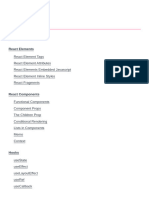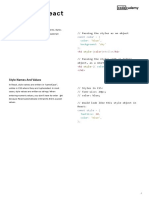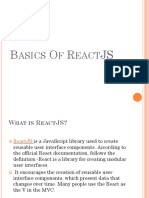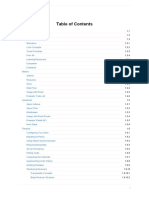0% found this document useful (0 votes)
32 views4 pagesLearn React - React Components Cheatsheet - Codecademy
The document provides a comprehensive guide on React components, including their structure, syntax, and how to import and export them. It explains the importance of capitalization in JSX, rendering components, and using JavaScript logic before the return statement. Additionally, it covers how to use object properties as attribute values in JSX expressions.
Uploaded by
thenishxCopyright
© © All Rights Reserved
We take content rights seriously. If you suspect this is your content, claim it here.
Available Formats
Download as PDF, TXT or read online on Scribd
0% found this document useful (0 votes)
32 views4 pagesLearn React - React Components Cheatsheet - Codecademy
The document provides a comprehensive guide on React components, including their structure, syntax, and how to import and export them. It explains the importance of capitalization in JSX, rendering components, and using JavaScript logic before the return statement. Additionally, it covers how to use object properties as attribute values in JSX expressions.
Uploaded by
thenishxCopyright
© © All Rights Reserved
We take content rights seriously. If you suspect this is your content, claim it here.
Available Formats
Download as PDF, TXT or read online on Scribd
/ 4






















































































